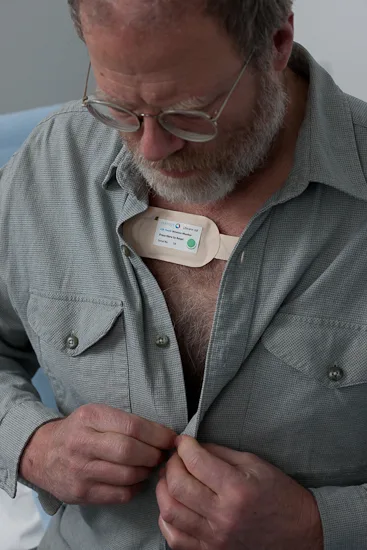Platform supports NHS objectives
A wireless patient digitisation platform is being extended to address critical patient safety issues and enable improved patient monitoring and alerting both in hospital and at home.

Isansys Lifecare, the provider of complete real-time physiological
patient status systems and services, has been awarded £1 million by Innovate UK
and NHS England through the Small Business Research Initiative (SBRI) programme
to roll out an award-winning digital platform that, when generally deployed, us said to significantly improve patient safety.
The healthcare contract follows the completion of two SBRI Phase 1 contracts in which Isansys demonstrated how the
Patient Status Engine – a continuous vital sign acquisition,
analysis and prediction platform – could provide low cost, continuous, high
resolution monitoring for all patients in hospital, and create new applications
and care pathways through data-driven physiological biomarkers, for example,
for the early detection of sepsis in chemotherapy patients at home.
The SBRI Healthcare Phase 2 contract will now enable the
Oxfordshire-based company to increase the functionality and extend the intended
use of the PSE, which integrates a range of advanced medically certified
wireless wearable vital sign sensors. This will not only meet the demands of
healthcare providers for innovative, market-ready solutions, that can enable
improved patient monitoring and alerting both in hospitals and at home, but it
will also address crucial patient safety issues; to reduce the number of
avoidable deaths and adverse events in hospital, reduce lengths of stay, and
enable new pathways to keep patients out of hospital in the first place.
Keith Errey, CEO of Isansys, said: “There is a pressing need
to improve patient safety, the way patients are monitored and how patients’
data is collected and analysed. Remote monitoring systems that use wireless,
sensing and information technologies to collect and analyse patient data show
great promise in delivering better care, improving patient safety and enhancing
clinical outcomes. These technologies can also help reduce the costs associated
with avoidable patient deterioration, medical errors, readmissions to intensive
care wards and admissions (and readmissions) to hospital.”
The announcement of the substantial funding from the SBRI to
Isansys comes as the Kings Fund, a UK health charity that shapes health and
social care policy and practice, reports that the shake-up of
theNHSimplemented early in the term of the coalition government,
but now largely reversed, was misguided, deepened the growing problems facing
A&E units and left the NHS weaker, structurally “incomprehensible” and less
able to improve care for patients. The focus now however is firmly on the patient
and on improving efficiencies. Patient safety is the key priority and as the
current Minister for Health has stated, safer care is lower cost care.
Figures show that around 1.2million reported patient care
incidents occurred in NHS hospitals last year alone ̽.
The total costs relating to patient safety including bed
days, ‘re-work,’ litigation and unrecorded events are more than £5 billion
annually, a huge sum that is largely a wasted expense.
Mr Errey said: “Except for those in intensive care wards,
most patients in UK hospitals are inadequately monitored. Even high dependency
patients often fail to receive the necessary higher intensity monitoring due to
a number of factors including suitable beds and nursing resource.
“Patients in general wards have their “obs” taken at long
(up to 8 hourly) intervals during which time significant negative changes in a
patient’s status can occur. Such infrequent monitoring makes it almost
impossible to identify trends that might have been able to predict the
patient’s deterioration.
“The PSE provides a solution to all of these issues, as well
as allowing the patient greater freedom and security. By significantly
improving patient monitoring and providing more robust and timely early warning
indicators, the PSE can also enable healthcare providers to reduce the number
of in-hospital avoidable deaths and adverse events, and to discharge patients
earlier and with greater confidence.”
For the last two years, Isansys has been working with a
number of hospitals and healthcare service providers to deliver patient
monitoring services and patient status solutions based on the first generation
of its Lifetouch system and Patient Status Engine (PSE) platform.
It was the success of these projects which helped secure the
second phase of the SBRI contract. Isansys is now developing its
second-generation devices and systems in line with the next wave of market
demand and these are about to be put into service in several locations.
HSM publishes a weekly eNewsletter, delivering a carefully chosen selection of the latest stories straight to your inbox.
Subscribe here


